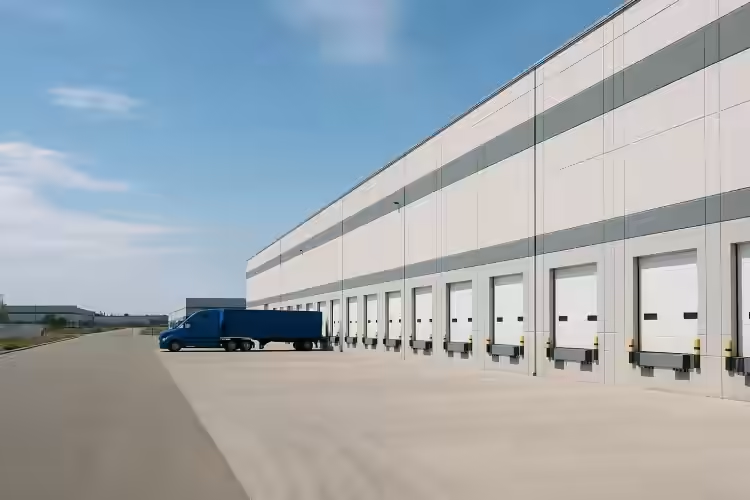Understanding Industrial Zoning and What It Means for Your Business
What Is Industrial Zoning?
Zoning isn’t the sexiest topic in the world, but it’s one of those behind-the-scenes forces that can make or break your business—especially if you're looking to lease or buy industrial space. So, what is industrial zoning?
In a nutshell, zoning laws determine what kind of activity can happen on a piece of land. Industrial zoning is a specific category that covers land used for manufacturing, warehousing, distribution, logistics, and other heavy-duty commercial operations.
These rules vary by city and county, but the goal is the same: to keep conflicting land uses—like a noisy factory next to a quiet suburban neighborhood—far apart.
So if you're eyeing a big warehouse near a port or an old factory space on the outskirts of Chicago, the first question you need to ask is: *what’s it zoned for?*
Types of Industrial Zones
Not all industrial zones are created equal. Some are meant for light-duty operations—like a local cabinet maker or a packaging facility. Others are designed for the big boys: freight hubs, heavy manufacturing, chemical plants.
Here’s a quick breakdown:
Light Industrial (e.g. M-1, I-1)
These areas are typically quieter, cleaner, and often located closer to residential zones. Think small machine shops, tech assembly, or food packaging.
Heavy Industrial (e.g. M-2, I-2, I-3)
This is where the sparks fly—literally. We’re talking steel mills, concrete plants, and any facility using large-scale equipment or emitting noise, odor, or pollution.
Special Use or Mixed Industrial
Some zones are carved out for specific industries—like petroleum processing or aerospace. Others are more flexible, blending warehousing, office, and light manufacturing in a campus-style setting.
Every city has its own code system. In Los Angeles, you’ll see zoning labels like M1-1 or M3-1-CPIO. In Atlanta, it might be I-1 or I-2. Always read the fine print.
Why Industrial Zoning Matters to Your Business
Here’s the kicker: If you move into a building not zoned for your use, you could be fined, shut down, or forced to relocate. And nobody wants that surprise six months into a lease.
Let’s say you’re launching a fulfillment center. You need truck access, loading docks, and 24/7 operations. A light industrial zone might not allow late-night noise or heavy truck traffic. But a heavy industrial site will.
Or maybe you’re a cannabis processor in Colorado. You’ll need a zone that not only allows industrial use but also complies with state cannabis regulations. Trust us, zoning boards don’t mess around.
Bottom line: zoning determines your freedom to operate—and your risk level.
Zoning Codes and What They Mean
Zoning codes look cryptic at first glance. “M1-2”, “I-3”, “HI”—what do they mean?
Here’s how to decode them:
- M usually means “Manufacturing.” Often used interchangeably with “I” (Industrial).
- 1, 2, 3 usually refer to intensity—1 is light, 3 is heavy-duty.
- Extra letters (like “CPIO” or “TOD”) refer to overlays or special planning districts.
If you’re unsure, talk to a land use consultant or a commercial real estate broker familiar with your area.
How to Find Your Zoning
Want to know what a property is zoned for? Here’s how to find out:
- Start with the county assessor’s website. Most have parcel look-up tools.
- Check with your city’s Planning or Zoning Department. Many offer interactive maps.
- Ask your broker or landlord directly—they should know (and if they don’t, red flag!).
Pro tip: don’t just look at the base zoning. Ask if there are conditional use permits (CUPs), variances, or overlays in place. These can change what you’re allowed to do on the site.
Zoning Pitfalls and How to Avoid Them
Here’s where things get tricky. Just because a building *looks* like a warehouse doesn’t mean it’s zoned for warehouse use. And just because you see trucks parked outside doesn’t mean it's legal.
Some common zoning gotchas:
- Non-conforming use: The building is grandfathered in, but if you change use or upgrade too much, you could lose the right.
- Overlay zones: Even if it’s zoned industrial, a historical or environmental overlay could block your operations.
- Conditional use permits: Some uses require special approval—and those permits don’t always transfer with the property.
Can You Change Your Zoning?
Short answer: sometimes. But it’s a process—and not a quick one.
Rezoning typically involves:
- Filing an application with the city or county
- Paying a fee (anywhere from $500 to $10,000+)
- Public hearings and possibly community opposition
- A 2–6 month wait (or longer)
Sometimes a workaround—like applying for a conditional use permit or minor variance—is faster. Other times, it’s better to find a property already zoned correctly and avoid the drama.
Final Thoughts
If you’re serious about finding the right industrial space, zoning should be the first filter you apply—not the last.
Sure, the square footage, loading docks, and ceiling height matter. But if the zoning doesn’t match your business model, none of that matters.
Start by asking: what kind of industrial zoning do I need? Then zero in on markets that offer it—whether that's Dallas for distribution or Cleveland for light manufacturing.
And remember: the right zoning isn’t just a box to check—it’s a foundation for growth. Get it wrong, and you're fighting uphill. Get it right, and you’re ready to scale.

